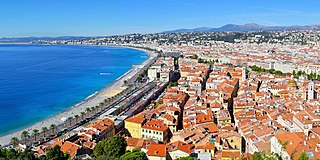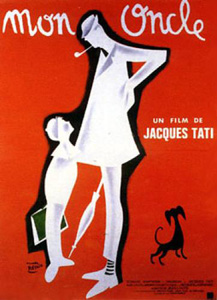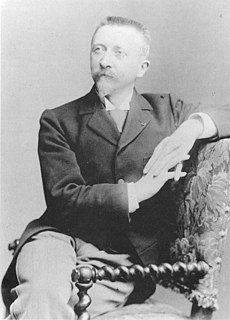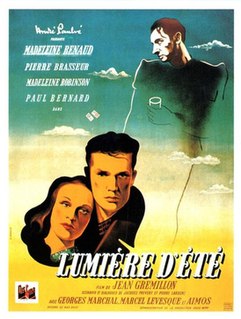
Nice is the prefecture of the Alpes-Maritimes department in France. The Nice agglomeration extends far beyond the administrative city limits, with a population of nearly 1 million on an area of 744 km2 (287 sq mi). Located on the French Riviera, the southeastern coast of France on the Mediterranean Sea, at the foot of the French Alps, Nice is the second-largest French city on the Mediterranean coast and second-largest city in the Provence-Alpes-Côte d'Azur region after Marseille. Nice is approximately 13 kilometres (8 mi) from the principality of Monaco and 30 kilometres (19 mi) from the French–Italian border. Nice's airport serves as a gateway to the region.

Henri Émile Benoît Matisse was a French artist, known for both his use of colour and his fluid and original draughtsmanship. He was a draughtsman, printmaker, and sculptor, but is known primarily as a painter. Matisse is commonly regarded, along with Pablo Picasso, as one of the artists who best helped to define the revolutionary developments in the visual arts throughout the opening decades of the twentieth century, responsible for significant developments in painting and sculpture.

The French Riviera is the Mediterranean coastline of the southeast corner of France. There is no official boundary, but it is usually considered to extend from Toulon, Le Lavandou or Saint-Tropez in the west to Menton at the France–Italy border in the east. The coast is entirely within the Provence-Alpes-Côte d'Azur region of France. The Principality of Monaco is a semi-enclave within the region, surrounded on three sides by France and fronting the Mediterranean. The French Riviera contains the seaside resorts of Cap-d'Ail, Beaulieu-sur-Mer, Saint-Jean-Cap-Ferrat, Villefranche-sur-Mer, Antibes, Juan-les-Pins, Cannes, Saint-Raphaël, Fréjus, Sainte-Maxime and Saint-Tropez.

Jean-Louis Charles Garnier was a French architect, perhaps best known as the architect of the Palais Garnier and the Opéra de Monte-Carlo.

Saint-Tropez is a commune in the Var department and the region of Provence-Alpes-Côte d'Azur, Southern France. It is 68 kilometres west of Nice and 100 kilometres east of Marseille, on the French Riviera, of which it is one of the best-known towns. In 2018, Saint-Tropez had a population of 4,103. The adjacent narrow body of water is the Gulf of Saint-Tropez, stretching to Sainte-Maxime to the north under the Massif des Maures.

Villefranche-sur-Mer is a commune in the Alpes-Maritimes department in the Provence-Alpes-Côte d'Azur region on the French Riviera and is located south-west of the Principality of Monaco, which is just west of the French-Italian border.

The Hotel Negresco is a hotel and site of the restaurant Le Chantecler, located on the Promenade des Anglais on the Baie des Anges in Nice, France. It was named after Henri Negresco (1868–1920), who had the palatial hotel constructed in 1912. In keeping with the conventions of the times, when the Negresco opened in 1913 its front opened on the side opposite the Mediterranean Sea.

Mon Oncle is a 1958 comedy film by French filmmaker Jacques Tati. The first of Tati's films to be released in colour, Mon Oncle won the Academy Award for Best Foreign Language Film, a Special Prize at the 1958 Cannes Film Festival, and the New York Film Critics Circle Award for Best Foreign Language Film, receiving more honors than any of Tati's other cinematic works.

Victorine-Louise Meurent was a French painter and a model for painters. Although she is best known as the favorite model of Édouard Manet, she was an artist in her own right who regularly exhibited at the prestigious Paris Salon. In 1876, her paintings were selected for inclusion at the Salon's juried exhibition, when Manet's work was not.

Alexandre Trauner was a Hungarian film production designer.

The Gare du Sud is a former French railway station located in the Libération quarter of the city of Nice in south-east France. The station was the terminus of the metre gauge railway of the Chemins de Fer de Provence rail company which links Nice to Digne-les-Bains in the department of Alpes-de-Haute-Provence. The station was closed in December 1991 when it was replaced by the Gare de Nice CP station. It remained derelict until 2013, when the station building was renovated and converted into a library.

Fashion in France is an important subject in the culture and country's social life, as well, being an important part of its economy.

La Fête espagnole is a 1920 French silent film directed by Germaine Dulac and written by Louis Delluc. It was cited by critic and film historian Georges Sadoul as being first in ushering in French impressionist cinema.
The Calais-Mediterranée Express was a French luxury night express train which operated from 1886 to 2003. It gained international fame as the preferred train of wealthy and famous passengers between Calais and the French Riviera in the two decades before World War II. It was colloquially referred to as Le Train Bleu in French and the Blue Train in English because of its dark blue sleeping cars.

Édouard-Jean Niermans was a famous Dutch-born French architect during the Belle Époque.
La Vie de bohème is a French-Italian drama film directed by Marcel L'Herbier. It is based on Scènes de la vie de bohème (1851) by Henri Murger and includes music from Giacomo Puccini's opera as accompaniment. The set designs were created by Georges Wakhévitch. It was filmed during the winter of 1942–43 at the Victorine Studios in Nice. However it was not released until January 1945, after the liberation of France.

Summer Light is a 1943 French drama film directed by Jean Grémillon and starring Madeleine Renaud, Pierre Brasseur and Madeleine Robinson.

The Trump Card is a 1942 French crime film directed by Jacques Becker and starring Mireille Balin, Raymond Rouleau and Pierre Renoir.
Louis Nalpas (1884-1948) was a Greek-French film producer. He was a leading producer during the silent era, and was employed by the large French studio Pathé.:30 He was behind the company's construction of the Victorine Studios in Nice in 1921, which attempted to create a version of Hollywood on the French Riviera.:95 He then broke away to form his own production company.
The Saint-Laurent-du-Var Studios were film studios located in Saint-Laurent-du-Var on the French Riviera, in the suburbs of Nice. They were one of two studios in the city along with the nearby Victorine Studio complex.

















